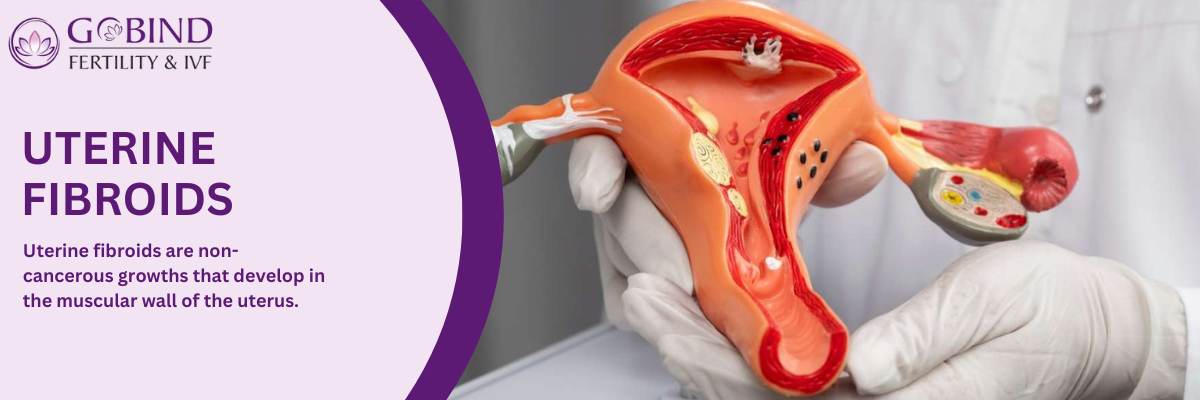

Uterine fibroids
Uterine fibroids, also known as leiomyomas, are non-cancerous growths that develop in the muscular wall of the uterus. They are the most common benign tumors in women of reproductive age.
Characteristics of Uterine fibroids:
- Kinds:- Intramural fibroids: Develop inside the uterine muscle wall.- Subserosal fibroids: Proliferate from the uterine exterior.- Submucosal fibroids: Expand inside the uterus.- Pedunculated fibroids: These are connected to the uterus by a structure resembling a stalk.
- Number and size: Fibroids can be as big as a grapefruit or as little as a pea. - A woman may have one or many fibroids in her body.
- Signs and symptoms: Larger fibroids can result in pelvic pain, heavy or prolonged menstrual bleeding, frequent urination, and reproductive issues like infertility or miscarriage. However, many fibroids are asymptomatic.Causes: Although the precise etiology of fibroids is unknown, hormones (progesterone and estrogen), genetics, and other growth factors are thought to have a role.
Treatment Options:
- Vigilantly waiting: For little, painless fibroids.
- Medications: Non-steroidal anti-inflammatory medications (NSAIDs), hormonal therapy (such as gonadotropin-releasing hormone agonists), or birth control pills to control symptoms.
- Surgical procedures
- Myomectomy: The surgical excision of fibroids with the uterus left intact.
- Hysterectomy: Total uterine excision; usually used for severe instances or in cases where the woman no longer wants to maintain her fertility.
- Uterine artery embolization: A minimally invasive technique that shrinks fibroids by preventing blood flow to them.
- Although fibroids are generally benign, there is a rare possibility that they raise the risk of uterine cancer. Appropriate management of uterine fibroids necessitates routine examinations and timely assessment of symptoms.

















